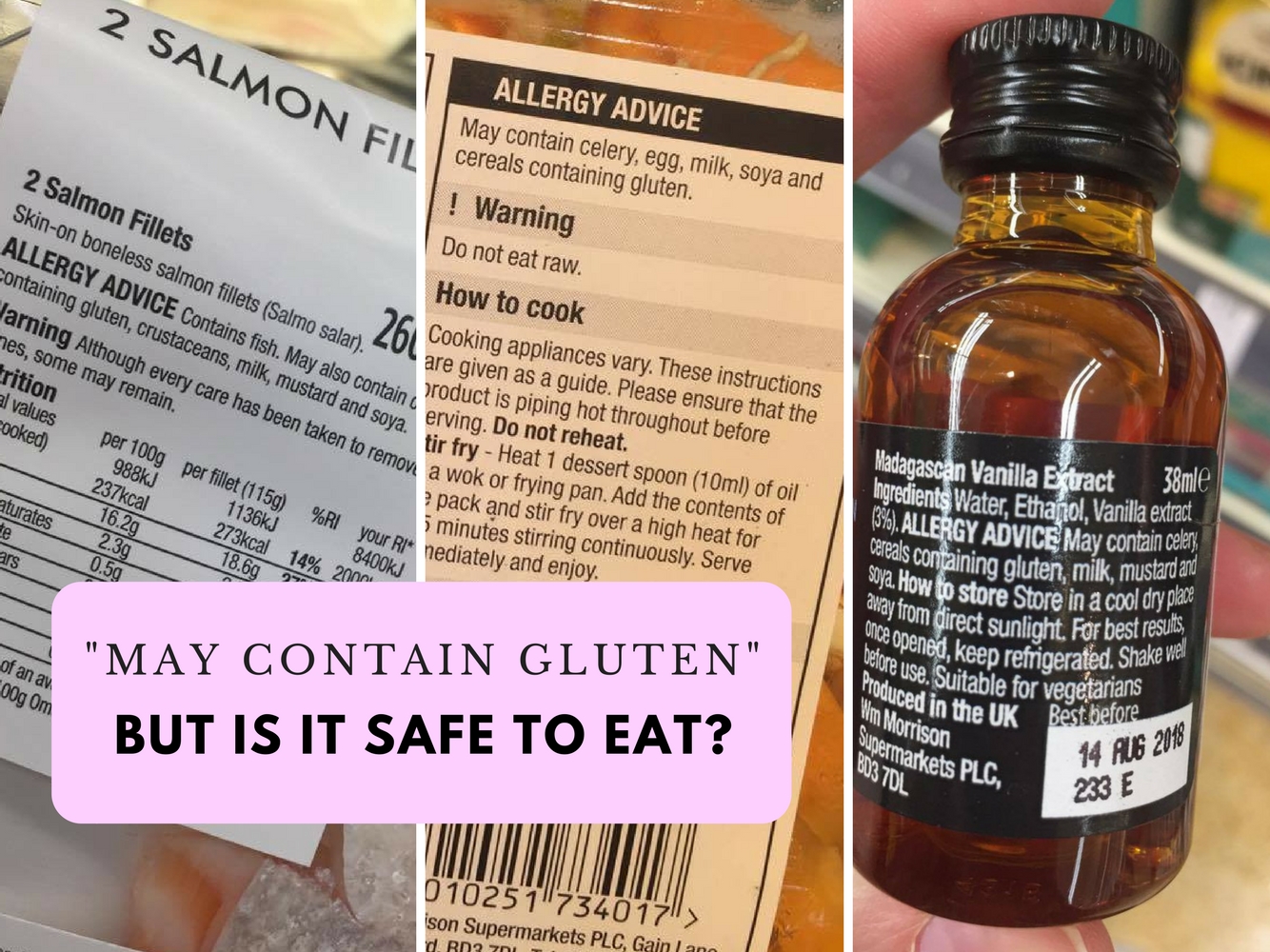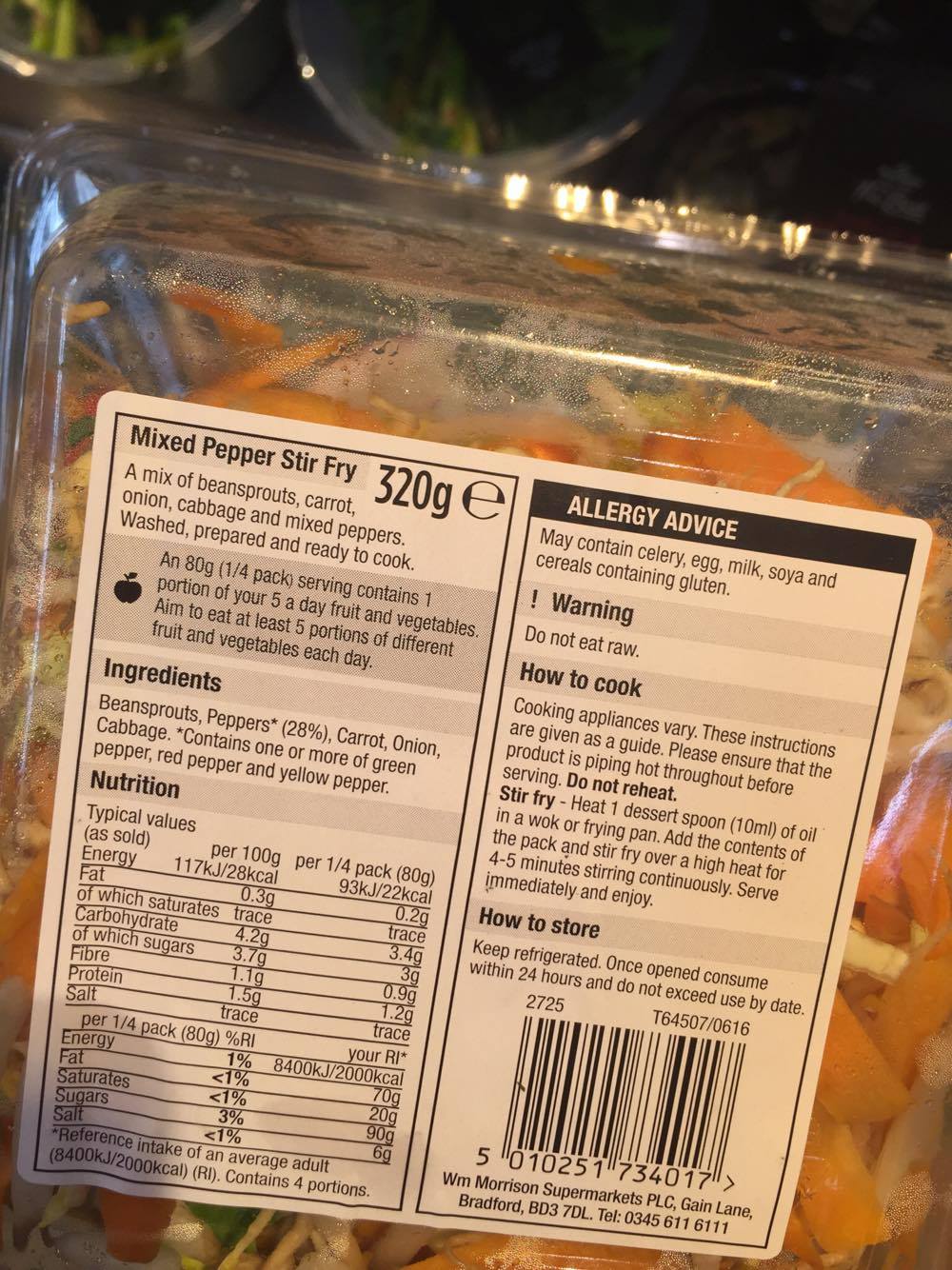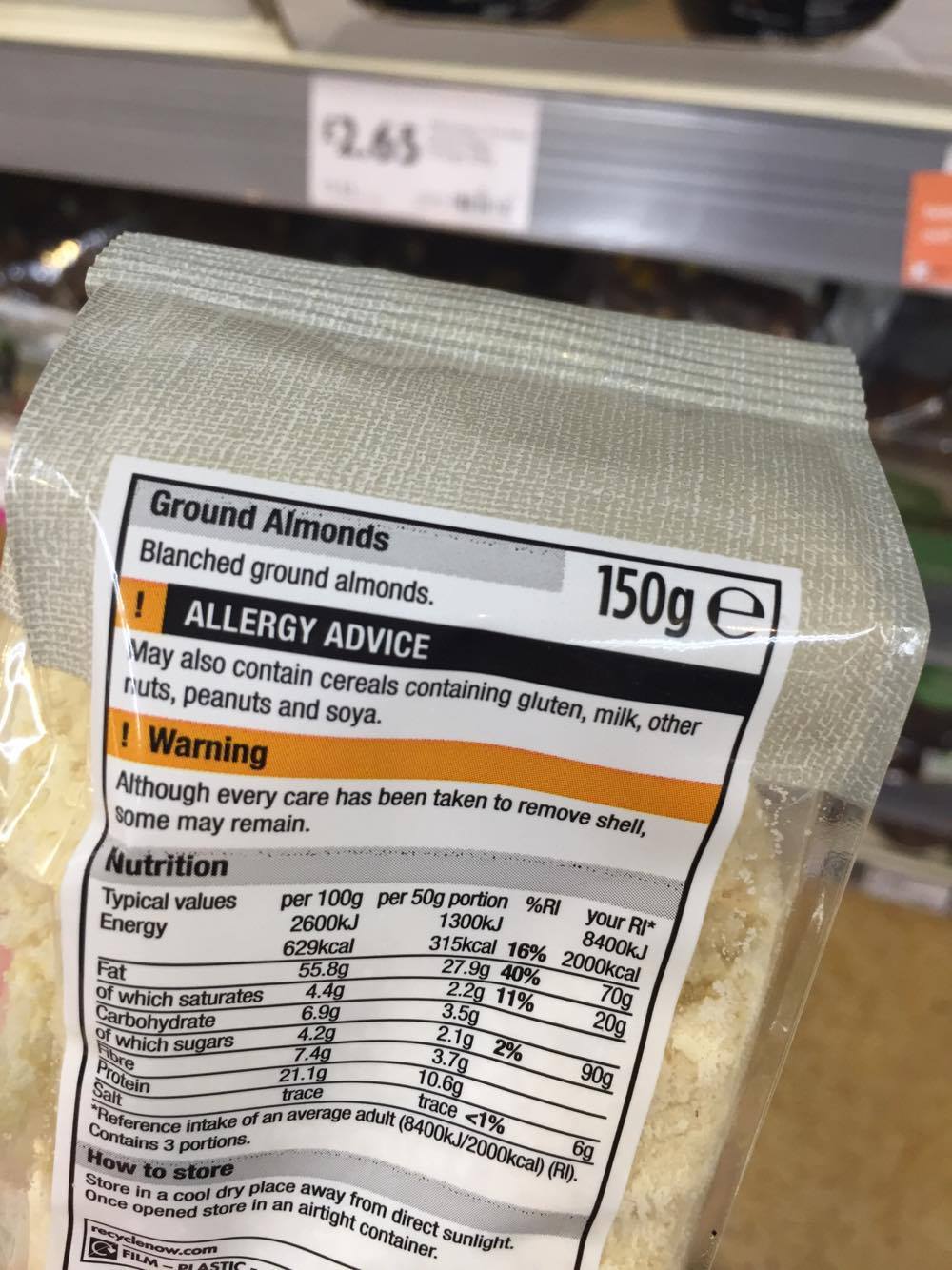‘May contain gluten’: Be careful with these Morrisons items

Wanna play a game? That’s exactly what you’re doing when you eat the following items. These are just a tiny sample of foods I’ve found in Morrisons that absolutely 100% shouldn’t contain gluten, but for some reason or other, the manufacturing methods are unsuitable for people with coeliac disease.
I ate the salmon from Morrisons for months before realising this. And it’s a massive bummer, because I’m a huge advocate of the store – its gluten-free range is fantastic. It’s my go-to place for Schar hamburger buns, gluten-free garlic bread, dairy-free and gluten-free ice cream cones… even big dirty Sunday-dinner-filled Yorkshire puds, if I really want them.
But after moving closer to a store and frequenting the place regularly, I’ve come to realise just how risky many Morrison products are for coeliacs to eat. Pretty much all of the fish and seafood is slapped with the label, lots of the pre-made vegetable packets, rice noodles, baking stuff such as vanilla extract and almonds. Things I would never have thought to even check – especially not the salmon!
I appreciate that the store does have the label on their products – I’d rather make the trip to somewhere further away from me than potentially put my health at risk, but isn’t there something the store could do to make manufacturing methods safer and in turn, make more naturally gluten-free foods available for coeliacs? We’re already restricted enough. Or am I just being too strict? What are the chances of these products actually having gluten in them? I decided to do some research once and for all…
Is it safe to eat ‘may contain gluten’ products?
I thought I’d check out what the Food Standards Agency guidelines are for items which come with cross-contamination warnings – and whether they’d be safe for gluten dodgers. Here’s what I found:
- The use of allergen warnings is voluntary. However, the FSA state they should only be used after a thorough risk assessment when there is a genuine risk to the consumer.
- In an allergen labelling study conducted by the FSA in 2014, a number of foods labelled with ‘may contain gluten’ (as well as those without advisory labelling) actually contained gluten. Out of the 542 foods tested, gluten was detected in 51 of them.
- The wording of the advisory label does not indicate the level of cross contamination. The FSA says products with ‘may contain cereals containing gluten’, ‘made on equipment that also processes cereals containing gluten’ and ‘made in a factory that also handles cereals containing gluten’ labels carry equal severity in risks.
- The FSA also state that ‘may contain’ labelling has been reported more and more – many think it’s used too much, restricting choices unnecessarily. The organisation states they are working to cut down on these labels (when not needed) and give clearer advice to the public on what the labels actually mean.
- In 2014, this advice on food allergen labelling guide was released, showing the allergen labelling changes implemented. In it, it says that any ‘may contain’ label should be taken seriously by those with allergies and coeliac disease. I’ve found nothing published by them since.
According to charity Coeliac UK, ‘may contain’ labels are best avoided if you’re at risk. It states that manufacturers need to use the ‘may contain’ label when items are:
- made on a line that handles wheat
- made in a factory that handles wheat
- not safe for people with coeliac disease or wheat allergies due to manufacturing methods
If a manufacturer thinks there is a risk that the product may be contaminated with the big G, the label will go on there. But there is still nothing stringent about what classifies as ‘may contain’. Surely a line that handles wheat is more severe than a factory that handles it? You can never be sure with this labelling.
After seeing discussions within gluten-free groups, there are a range of opinions on the matter:
Arguments for eating ‘may contain gluten’ items:
- if a product will definitely contain an ingredient, the manufacturers have to tell you
- the machines are cleaned regularly and many coeliacs never have a problem with it
- the label is for companies to cover themselves – if you eat the item and become ill they can’t be sued
- it’s probably the tiniest amount of gluten – under the standard 20ppm regulations – so won’t harm you
Arguments against eating ‘may contain gluten’ items:
- it’s not worth the risk – even if you don’t feel the effects immediately, cross-contamination will still be damaging your gut
- many have risked it, become ill, and would never do it again
- there’s a reason for the label, even the smallest amounts of gluten will cause a reaction in coeliacs and should be taken very seriously
‘May contain gluten’: My conclusion
Whether you choose to eat ‘may contain gluten’ items or strictly avoid them is entirely up to you, but personally I won’t be eating them. That’s because both the FSA and Coeliac UK state these labels are to warn people with allergies and coeliac disease. The Food Standards Agency say that these labels should be taken seriously, so I think it’s best to avoid them.
The label is there for a reason and if it means missing out on food then so be it – it’s hard enough trying to grow these little villi back to start with. However, if I was gluten intolerant, I might risk it, because Coeliac UK only specify the products as ‘not safe for people with coeliac disease or wheat allergies’.
Plus, you can always find an alternative. Walkers crisps ‘may contain’ so some coeliacs risk it – but how many gluten-free crisps are out there now? Too many to count… and many of them much tastier than Walkers. Morrisons vanilla extract ‘may contain gluten’, but there was another brand (slightly pricier) labelled ‘gluten-free’. It’s not too hard to find alternatives these days – the gluten free market is growing by the second.
Obviously, it’s not always convenient. In fact it’s a god damn pain in the ass – spoken as a coeliac who has missed out on all kinds of goodies at work food events, parties, or even just a cuppa and a biscuit round a mate’s house – thanks to ‘may contain’ items. But I’d rather do that than play Russian Roulette with my health.





Another reason for the “may contain gluten” etc, may be so that they can then justify a price hike in the gluten free range… the government really needs to crack down on this, it is totally unfair
Good blog post.
As a Coeliac if it says ‘may contain’ it may as well say ‘contains’ as I wouldn’t consume it.
Thanks for this information it’s spot on.
I had a coleslaw last night it was packaged with a dressing my
son prepared it, Thinking it was ok .
Within 10 minutes I felt lethargic clammy in general very un-well.
I looked the supermarket item up and it read may contain gluten from cereal . Never again as a coeliac we guys have to read every thing. To add to the frustration the print is often so small you can hardly read it.
Fortunately I had very little stomach pain .
When I’m glutened , I think that could of been a little kid being exposed to gluten, it’s irresponsible of the manufacturers and the Supermarkets, as we pay a lot more for gluten free food.
So please give us what we ask for, readable decent labels .
Thanks again, Wendy.
I have just been caught out by Morrisons – trying to buy cod. Just ordinary pieces of cod in a pack. There are other types of fish in idential looking packaging, eg sea bass, tuna, that don’t say “may contain gluten”. Why some and not the other? Morrisons clearly can keep gluten below the 20ppm legal limit as they have a huge range of items, including GF fish fingers, so what are they doing with their cod? The man on the fresh fish counter had no explanation.
I am just recovering from gluten poisoning and am trying to be even more strict than usual while I heal. Fortunately I spotted this warning before purchase. My normal practice is to avoid “may contains” and you have convinced me this is the right thing to do. However I smell some kind of rat here, and wish there was a clear requirement for suppliers to make a risk assessment and label accordingly. How about taking more care in the production process.